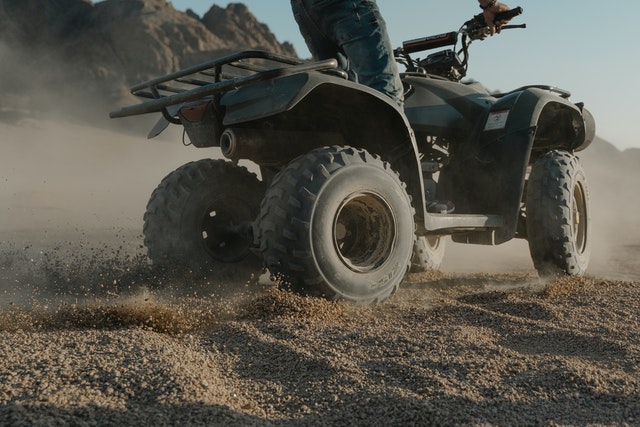
Image Source: Pexels
If you’ve recently acquired a 4×4 vehicle and are planning an off-road adventure, there are some things you should be aware of. Off-roading is thrilling and adventurous, but it also carries some risks. There are several safety precautions to take while preparing your SUV for off-road adventures. Before setting out on the trail, you should be aware of the following crucial off-road driving advice.
1. Perform Vehicle Inspection
Before hitting the trail with your ATV, make sure your ATV parts are prepared for an off-road adventure by doing a pre-trip vehicle inspection. Inspect all of your truck’s main operations and make sure the tires have enough oil, gas, and air. Keep emergency supplies on hand, such as a spare tire, tire tools, jumper cables, flares, and a first-aid kit.
Off-road power components, like off-road suspension systems, are designed for tough circumstances and can help you test the boundaries of other components on your vehicle. These power supplies boost off-road performance and provide much-needed suspension adjustments so you can enjoy your ride while also helping your vehicle overcome trail problems.
2. Research on The Selected Area and Off-Road
Another off-road driving suggestion is to study the chosen road and location. First, check the weather forecast to see what the weather will be like. You may also work out any slick areas of the road ahead of time so that you are well prepared for the challenge. An off-road tour guide can help you detect odd road features, like rocks, grooves, mud puddles, and holes.
You should also determine the path’s length and breadth. Identify the tight sections and try to bypass them by taking a different route. You can be cautious and simply navigate the off-road terrain if you do your research ahead of time. As a novice, you don’t want any unpleasant surprises on your journey.
3. Keep Control
The key to a safe off-road drive is maintaining control of your vehicle. Drive gently, avoid excessive speeds, take curves cautiously, keep an eye out for any road hazards, and stay focused on the road. The majority of off-roads and pathways are small and winding. When making a bend, be aware that another vehicle may be approaching from the other way. Speeding around bends is risky and can result in a collision.
Always try to go on an off-road journey during the day, particularly if you’re a newbie on a path you’ve never been on before. Because poorly designated paths might be dangerous, you should never try to ride at night.
4. Reduce The Pressure on Your Tires
When driving about the city, it’s essential to have your tires adequately inflated, but more pressure means a harsher ride when going off-road.
Low-pressure tires can withstand more impact, reducing the risk of vehicle damage. This is critical for driving on soft surfaces. It provides excellent grip, which is necessary to avoid being stuck in the center of the road. Make sure you don’t deflate them too much. Because tire air pressure keeps your tires on the rim, they will come off without it.
5. Track Your Location
Another off-road safety recommendation is to let someone know you’re going off-road before you go. Because back roads may lack network connectivity, have someone maintain track of your whereabouts. It might be a member of your family or a close acquaintance. Inform them which path you’ll be driving on and when you intend to arrive so that they can help you if you get stranded somewhere along the way.
6. Place Your Thumbs Outside and Inside
When driving off-road, your thumbs should not wrap around the steering wheel. Due to the unforeseen challenges you may encounter when driving, this is vital safety advice. The front tires are attached to your steering wheel, and those tires are experiencing significant obstacles. One unexpected bump or an extended moment of grasp might result in dislocation or worse.
7. Slow is Good
Driving as slow as feasible and as fast as needed is the off-road driver’s slogan. Some speed may be necessary to ascend a slope or overcome a hazard. However, if you believe the barrier demands merely 10 mph, you will most likely fail. You’re either going to break something or become stuck.
Closing Thoughts
You want to accomplish everything as a novice, but you’ll quickly realize there’s more to master. Don’t hasten your off-road driving methods learning curve. Follow the above tips, and you’ll have a fantastic experience.

